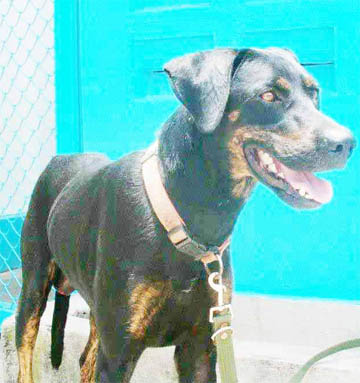The ear: General considerations -Continued
Last week, I ended the article by saying that after every dog/cat fight, you should look at the ears for wounds. Believe me, even the simplest wound that has given rise to the oozing of some blood or serum, is enough to allow bacteria to grow. Blood/serum is like a nutritive broth, a growth stimulant for bacteria. Sometimes, the blood from a wounded ear flap can drop into the ear canal; all sort of junk can then grow on that droplet of blood/serum. It behoves you, the pet protector, to institute measures which ensure that a simple wound does not evolve into a life threatening septicaemia.
Now let’s look at one simple but important thing you can do at home to prevent ear ailments from developing. You can pull the hair from around the entrance to the ear canal, so that air can circulate properly. When I went to school (admittedly in the era of the dinosaurs), it was a standard procedure to yank (with speed and dexterity) hair from the ear canal entrance to promote good air circulation, and thus reduce the chance of an infection developing.
Well, over the years, (and after many refresher courses), the great wisdom has emerged that the pulling of hair is not necessarily a good thing. You see, as you pull the hair out of the skin, serum oozes out of the tiny holes that you have left behind. Bacteria can grow on that serum. Lord, forgive me. In the four decades of my veterinary practice, I must have precipitated several infections, especially in wire-haired dogs in general and Poodles in particular.
I still believe in the clearing of the entrance to the ear canal by removing a thick bunch of hair there. However, now I smear some antibiotic ointment when I have finished the exercise.
Some veterinarians I know prefer to clip the hair around the external ear canal orifice. Well that’s all fine and good, if there is not a thick, matted (foul smelling) wad of hair present. If the latter scenario exists, let your vet remove the hair. No ifs, no buts. In fact, you can do it yourself at home with a tweezers. The same way you pluck out hairs from your own eyebrows.
Let’s describe the application of ear drops or ointments (usually antibiotics) to the ear. This is not a great scientific undertaking. Hold the dog’s head still (you don’t want to damage the dog’s ear with the nozzle of the tube/bottle). Squeeze a bit (not too much, about a half-inch) of ointment into the opening of the ear canal. I prefer ear drops. The liquid reaches every place and distributes itself evenly. Four drops per ear are enough. Rub the base of the ear to disperse the drops/ointment. You should use the ointment/drops as your vet directs (two or three times daily). Clean the ear (as described last week) before each intervention.
Where puppies are concerned, you need not attempt any cleansing. The mother dog does everything perfectly. As the pups get older and their teeth sharper, there may be ear lesions created during play. None of the damage is so severe as to necessitate great antibiotic intervention. If there is an obvious infection (with oozing discharge), then you must contact your veterinarian immediately.
I have noticed recently that, here in Guyana, there seems to be an upsurge in requests from owners for veterinarians to “sculpt” what the owner (or the owner’s vanity) feels is necessary for the dog to look cuter. May I suggest that whosoever has this urge should abandon it, so as not to create an embarrassing situation when your vet pointedly refuses to agree to the request. Your dog is quite happy with the ears with which he was born. You cannot improve upon perfection.
Of course, if there is some abnormality/deformity which results in the ears creating a problem for the dog (eg the long ears of some breeds of hounds dragging on the ground and/or being stepped on), then you, in consultation with your vet, might consider a corrective (surgical) intervention.
Have a pleasant week.


